Isabella - Punta Moreno and Elizabeth Bay
Our day four itinerary included two visitor sites on the southwest coast of Isabella – Punta Moreno and Elizabeth Bay.
Punta Moreno
The wild, barren lava landscape at Punta Moreno had a surprise; numerous lagoons containing patchworks of vegetation. Galápagos lava is mostly basalt resulting in eruptions that discharge molten lava rather than explosions of ash and debris. The lava at Punta Morena is a’a-lava that has oxidized and broken over the last one thousand years and is fragile.
After another overnight voyage, we arrived early in the morning; two other boats were at the Punta Moreno (Moreno Point) anchorage. Following an early breakfast, a panga took us south to explore the wildlife on the rocky shoreline and islets before heading to the dry landing site.
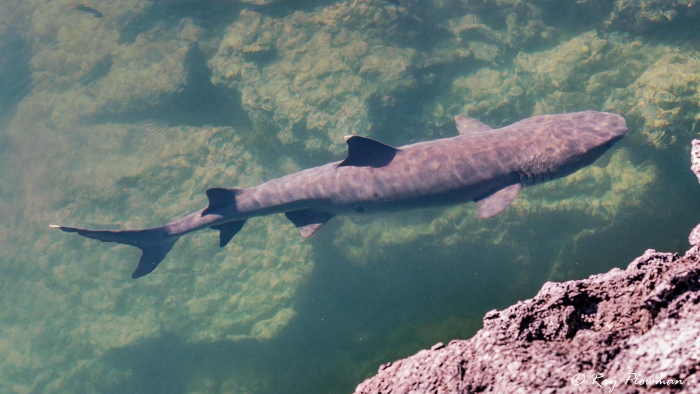
White-tipped Shark Swimming in a Tidal Lagoon
My wildlife highlight at Punta Morena was undoubtedly the white-tipped sharks swimming in one of the tidal lagoons.
Punta Morena Landscape, Flora and Fauna
Punta Morena Landscape, Flora and Fauna
The trail passes over lava, often tricky to negotiate, leading to tidal lagoons, pools, and mangroves. We followed the anticlockwise trail marked by occasional black and white posts stopping to explore the pools and lagoons flora and fauna. And photograph the landscape. Finally, we returned to the boat via the islets and rocky shore, again stopping to take wildlife photos.
Displayed images show landscapes featuring a’a lava and three types of endemic cacti. Firstly, the lava cactus (Brachycereus nesioticus), an endemic that colonizes lava fields. Second candelabra cactus (Jasminocereus thouarsii). And third, the prickly pear cactus (Opuntia insularis) a short and stubby species. Furthermore, a couple of the images show the vast lava field that extends up to the Cero Azul volcano. And a photo of white-tipped sharks that were swimming in a tidal lagoon.
Punta Morena Coastal Wildlife
Coastal Wildlife at Punta Morena
Featured in the gallery are wildlife photographed on the rocky shoreline and islets from a panga. Images include the nominate subspecies of the marine iguana found on Isabela and Fernandina. Also, endangered fur seals, penguins, and an immature green heron. Moreover, the Galápagos fur seal pup image shows oil pollution on the rocks that have contaminated the pup and several sally lightfoot crabs. Additional photos show oil pollution contaminating a mess of Galápagos marine iguanas and an endangered Galápagos penguin. Finally, the last two images show a large male and two males fighting for harem dominance.
Other birds photographed but displayed were a flightless cormorant and a great frigatebird perched on a mangrove tree.
Elizabeth Bay
We were underway before lunch, heading north to Elizabeth Bay (Bahía Elizabeth), a no landing site, for a mid-afternoon panga ride around the bay, lagoons, and mangrove forests.
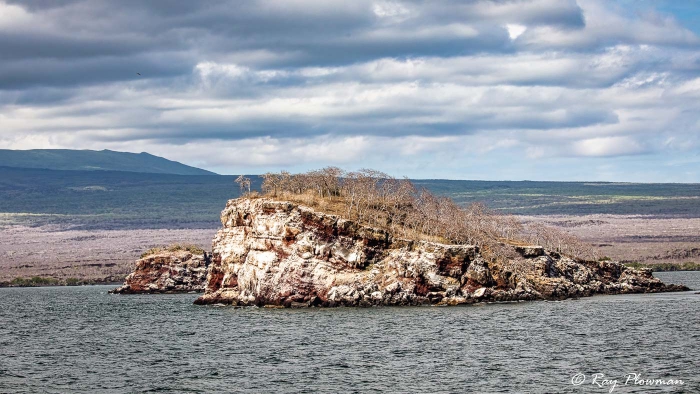
Penguin Breeding Island at Elizabeth Bay
On the approach to Elizabeth Bay, we passed the largest of the three Islas Marielas. However, visitors cannot get close to the islets being home to a breeding colony of endangered Galápagos penguins.
We anchored opposite Elizabeth Bay lagoon entrance in the mid-afternoon. Then we set off in the panga to explore some small islets in the bay and wildlife in the large lagoon.
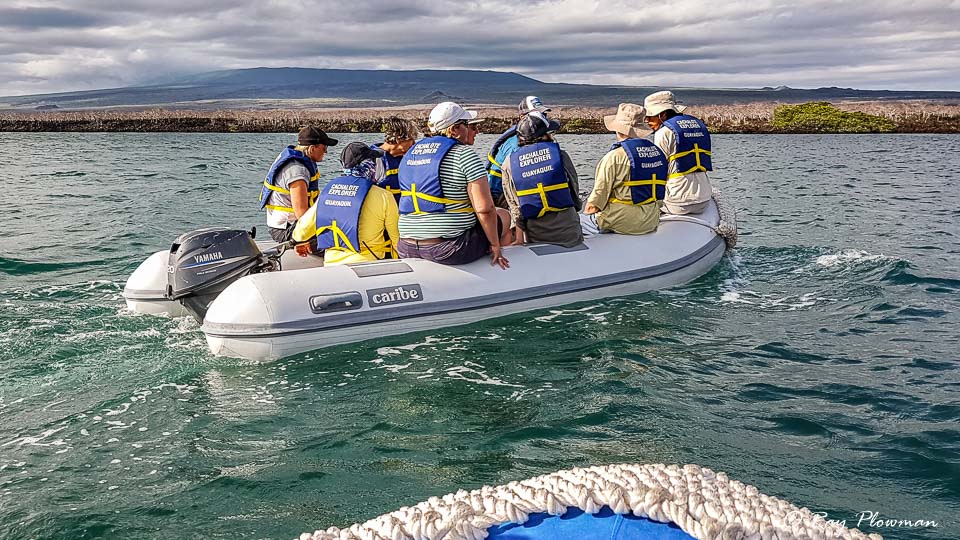
Panga Ride around Elizabeth Bay at Isabela Island
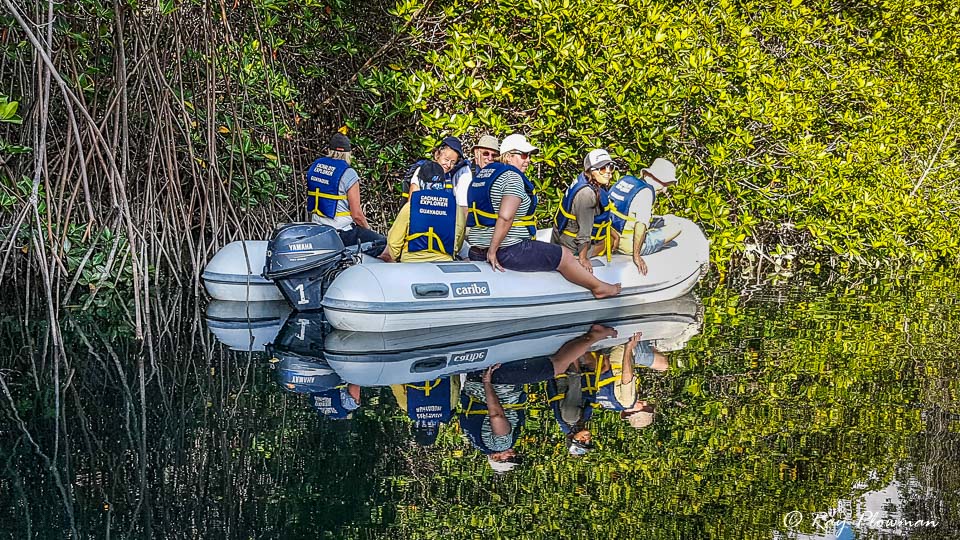
Elizabeth Bay Mangrove Forest by Panga
Elizabeth Bay Panga Ride Wildlife
Wildlife at Elizabeth Bay
The first seabird was a blue-footed booby on a small islet; I never got tired of photographing these comical birds. On the same islet were flightless cormorants and sea lions. Then south to a small lagoon where green turtles swam close to the surface of the clear waters. On the way to the mangrove lagoon, I spotted a juvenile Nazca booby on the water. Once in the mangrove lagoon, we saw great blue herons in breeding plumage. Also, but not included in the gallery were brown pelicans, penguins swimming and more green turtles.
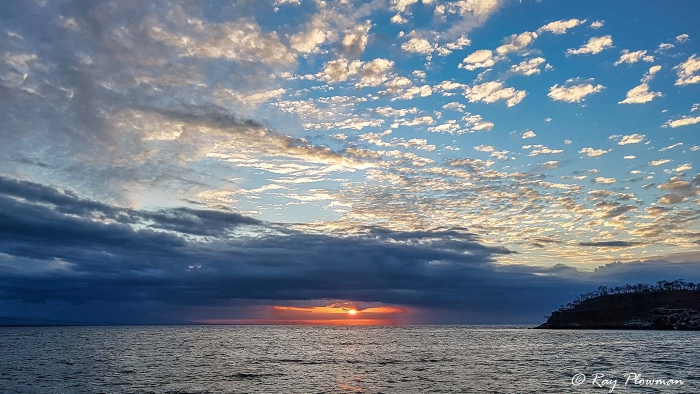
Sunset at Elizabeth Bay
And finally, a fitting end to the day with a spectacular sunset just before dinner.
Bibliography - Online Resources
1. Lava Types: Pahoehoe and Aa 2021. [Online] Available from Galapagos Geology on the Web [Accessed 1-Sep-21].


























